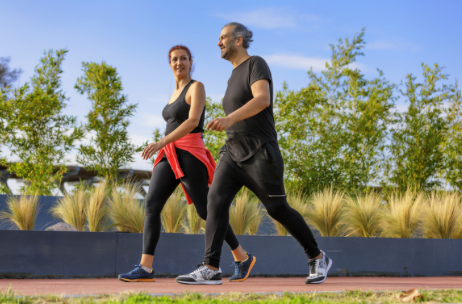
Benefits of Exercise for Pain Management
—Jill Fandrich, PharmD, CRPh
Exercise provides numerous benefits for pain management. Here are some key advantages:
1. Reduction in pain levels - Regular physical activity has been shown to decrease chronic pain levels. Exercise releases endorphins, which are natural painkillers produced by the body. These endorphins can help alleviate pain and promote a sense of well-being.
2. Improved muscle strength and flexibility - Regular exercise helps strengthen the muscles surrounding the affected area, providing better support and stability. Strong muscles reduce the strain on joints and bones, alleviating pain caused by conditions such as arthritis or back pain. Additionally, exercise enhances flexibility, allowing for better mobility and diminishing stiffness, which are common sources of discomfort.
3. Enhanced joint function - Moderate exercise, such as low-impact activities like walking or swimming, can help lubricate and nourish the joints, reducing pain and stiffness caused by conditions such as osteoarthritis. Physical activity increases blood flow to the joints, delivering essential nutrients and oxygen for optimal joint health.
4. Weight management - Maintaining a healthy weight is crucial for managing pain, as excess body weight can exert additional pressure on the joints and spine, leading to increased pain. Regular exercise combined with a well-balanced diet promotes weight loss or weight maintenance, reducing the strain on the body and alleviating pain symptoms.
5. Improved mood and mental well-being - Chronic pain can lead to feelings of stress, anxiety, and depression. Engaging in exercise releases endorphins, serotonin, and dopamine, which are neurotransmitters that enhance mood and promote a sense of happiness and well-being. Regular physical activity also distracts the mind from pain, providing a mental break and reducing pain perception.
6. Better sleep quality - Chronic pain often disrupts sleep patterns and can lead to insomnia or poor sleep quality. Exercise can promote better sleep by increasing the duration and quality of sleep. The physical exertion during exercise tires the body and allows for more restful sleep, leading to improved pain management.
7. Overall health benefits - Exercise contributes to overall physical fitness, which can indirectly assist with pain management. Regular exercise improves cardiovascular health, enhances immune function, increases energy levels, and reduces the risk of various chronic diseases. These overall health benefits can indirectly improve pain management and quality of life.
It is crucial to note that before starting any exercise regimen for pain management, it is advisable to consult with a healthcare professional or a qualified exercise specialist to ensure the activities chosen are suitable for the specific condition and individual needs.

Exercise is not just a physical activity; it is a prescription for pain management. Its power lies in its ability to heal not only the body but also the soul. The more we move, the more we defy pain, and the stronger we become in the face of adversity. By embracing exercise, we unlock our potential to rise above pain and discover the true strength that resides within us.
—Dr. Jill
Who will you share this with?
(Email addresses remain private.)
Add comment
Comments